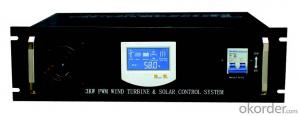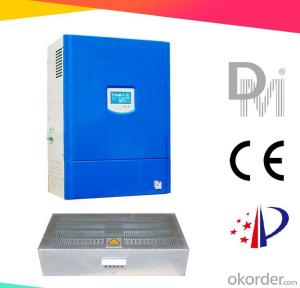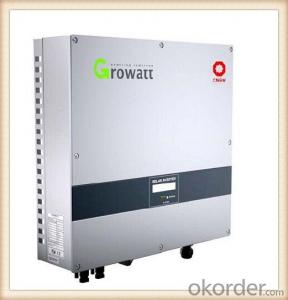Best Hybrid Solar Inverter
Best Hybrid Solar Inverter Related Searches
Best Paint For Stainless Steel Best Inverter For Solar System Solar Panel Inverter For Home Best Inverter For Solar Panels Best Solar Inverter For Rv Bending Machine For Pvc Profiles Micro Inverter For Solar Panel Best Glue For Aluminum Foil Pvc Foil For Mdf Plastic Wall Coverings For BathroomsHot Searches
Type Of Inverter For Solar Price Of Shipping Containers For Sale Types Of Inverter For Solar Used Sandwich Panel For Sale Bags Of Cement For Sale Pvc Chairs For Sale Tilt Panel Props For Sale Types Of Temporary Side Panels For Cement Deck Cost Of Awnings For Decks Type Of Scaffolding With Pdf Price Of Scrap Stainless Steel Price Of Stainless Steel Scrap Price Of Stainless Steel Type Of Stainless Steel Best Solar Inverter In China Types Of Stainless Steel Grades Types Of Stainless Steel China Aluminum Coil Factory pvc pipe manufacturers in usa Sandwich Panel Price In IndiaBest Hybrid Solar Inverter Supplier & Manufacturer from China
Okorder.com is a professional Best Hybrid Solar Inverter supplier & manufacturer, offers integrated one-stop services including real-time quoting and online cargo tracking. We are funded by CNBM Group, a Fortune 500 enterprise and the largest Best Hybrid Solar Inverter firm in China.Hot Products
FAQ
- Yes, a solar inverter can be used in a mobile or portable solar power system. Solar inverters are designed to convert the DC (direct current) electricity generated by solar panels into AC (alternating current) electricity that can be used to power various devices. In a mobile or portable solar power system, the solar inverter plays a crucial role in converting the energy collected by the solar panels into a usable form for powering appliances or charging batteries.
- Yes, a solar inverter can be used in areas with high levels of lightning activity. However, it is important to ensure proper installation and grounding measures are in place to protect the inverter from potential damage caused by lightning strikes.
- Some safety measures to consider when installing a solar inverter include: 1. Proper grounding: Ensure that the inverter is properly grounded to prevent electrical shocks and to maintain system stability. 2. Compliance with electrical codes: Adhere to local electrical codes and regulations to ensure safe installation and minimize the risk of electrical hazards. 3. Disconnecting power: Before starting the installation, make sure to disconnect power from the solar panels and the grid to avoid electrical accidents. 4. Proper ventilation: Install the inverter in a well-ventilated area to prevent overheating and potential fire hazards. 5. Adequate wiring: Use appropriate wire sizes and proper connections to handle the current capacity of the inverter and minimize the risk of electrical short circuits or fires. 6. Surge protection: Install surge protectors to safeguard the inverter and connected devices against power surges and lightning strikes. 7. Regular maintenance: Perform routine maintenance and inspections to ensure the inverter is functioning properly and to identify any potential safety issues. 8. Qualified installation: It is recommended to have the solar inverter installed by a qualified professional who is knowledgeable about electrical systems and safety measures. By following these safety measures, the risk of electrical accidents or system malfunctions can be minimized, ensuring a safe and reliable solar inverter installation.
- Yes, a solar inverter can be used with a solar car charging system. A solar inverter converts the direct current (DC) produced by solar panels into alternating current (AC) that can be used to charge electric vehicles, including solar cars. This allows the solar car charging system to efficiently convert and deliver the solar energy to charge the car's battery.
- Yes, a solar inverter can be used in standalone systems. Standalone systems, also known as off-grid systems, are not connected to the main power grid and rely on alternative energy sources such as solar power. In these systems, a solar inverter is essential as it converts the direct current (DC) generated by the solar panels into alternating current (AC) which can be used to power household appliances and other electrical loads.
- Yes, a solar inverter can be used with different solar panel technologies as long as the output voltage and current specifications of the panels are compatible with the inverter. However, it is important to ensure that the inverter is designed to work with the specific characteristics and voltage range of the solar panel technology being used for optimal performance and efficiency.
- Yes, a solar inverter can be used with a three-phase power system. In fact, many solar inverters are designed to work specifically with three-phase power systems. These inverters convert the DC power generated by solar panels into AC power that can be used by the three-phase electrical grid.
- Yes, a solar inverter can be used with a solar-powered data center. A solar inverter is an essential component that converts the direct current (DC) generated by solar panels into usable alternating current (AC) electricity for powering electrical devices and systems, including data centers. By using a solar inverter, a solar-powered data center can efficiently utilize the renewable energy generated by solar panels to meet its power requirements.











































